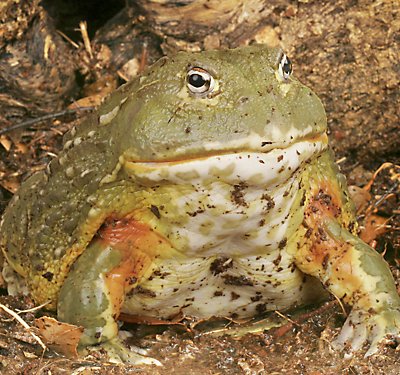
 top
top
REPTILE / health & care
How to care for your Anolis lizard
Tips for keeping your anole happy and healthy.
Overview
Small size, bright green or brown color, personable temperament – it’s no wonder the Green Anole (Anolis carolinensis) and the Brown Anole or Cuban Brown Anole (Anolis sagrei) lizards have become one of the most popular reptilian pets in the United States. Commonly known as the green anole, they’re a great introduction to reptiles as pets. The Anolis is relatively easy to care for, and this reptile care guide can help you make sure you’re giving your pet everything it needs for a happy, healthy life.
6 cool facts about Anolis lizards.
- Natural habitat: Temperate and tropical forests.
- Size: Anoles can grow to be 8 inches long.
- Lifespan: These awesome pets can live up to 5 years on average.
- Sensitivity: Anoles are extremely fast and are often hard to catch. Because they don’t like to be handled too much, it’s important to treat them gently.
- Nature: Male anoles are territorial. Their social structure is known as female-defense polygyny. One male will establish dominance in an area and patrol the outskirts of a group of female anoles territories with which he mates with to keep away other males.
- Color: Anoles can slowly change color from bright green to brown, yellow or gray or black depending on their mood and the temperature and humidity of their environment.
Building a happy home for your Anolis lizard.
The right habitat will give your Anolis lizard plenty to do – and let you spend hours happily watching them climb and explore.
- Size of terrarium: Your Anolis lizard will need a reptile terrarium that’s at least 10 gallons (40 liters) in volume and 18 inches (46 cm) tall, with a screened lid. If you have multiple lizards, you’ll need to increase the size of their habitat accordingly.
- Substrate: Line the bottom of the terrarium with 2 to 3 inches of a commercially available combination naturalistic substrate. These mixes are typically made up of organic peat soil, sphagnum moss, charcoal or sand, and cypress mulch or bark. Combination substrates and additional sphagnum moss help maintain humidity.
- Cleaning: Spot-clean the bedding at least once a week and change it completely once a month.
- Lighting: Because these animals are diurnal – active during the day – they need about 12 hours of light daily. A UVB emitting bulb is necessary in order for the anole to metabolize calcium. Like many animals, anoles can see within the ultraviolet light spectrum. In nature they utilize this to better identify each other, food items, dangers, etc. UVA bulbs can be provided for visual enrichment and mimic a more natural environment.
- Temperature: Anoles are ectothermic, which means they rely on external heat sources to maintain their internal body temperature. Use a heat bulb or ceramic heat emitter to establish a temperature gradient. Anoles are semi-arboreal. During the day, keep the temperature at the top of the terrarium between 85-90° F (29-32° C) and the temperature at the bottom of the terrarium between 75-85° F (24-29° C). At night, the whole tank should be 65-75° F (18-24° C). To monitor the temperature accurately, you’ll need two thermometers – one at the top and one at the bottom.
- Basking area: Basking in the sun is high on your lizard’s list of favorite pastimes. Create a basking area with a rock or raised branch that’s nearer the heat source, where you can get the temperature up to 85-90F. Just be sure the heat feature is at a safe distance from the lizard to avoid thermal burns.
- Humidity: Maintain the humidity within your Anolis habitat between 60% and 80%. Use a hygrometer to keep track. Create and maintain humidity by keeping the anole’s water dish full and by misting the terrarium 2 to 3 times a day. Or use an automatic fogger or mister. These tips along with a good moisture retaining substrate will facilitate maintaining the proper humidity.
- Things to climb and places to hide: Create hiding places with natural or artificial rocks, branches, logs, and sticks with habitat decor. Add stable and sturdy live plants like pothos, bromeliads and sansevierias to give your pet natural climbing structures.
- Location: The terrarium should be elevated off the ground on a stable structure.
A reptile starter kit should contain several items you will need to set up your lizard’s terrarium.
What to feed your Anolis lizard.
What’s on the menu at Casa de Anolis? Insects, specifically feeder insects! Small crickets, roaches, mealworms, fruit flies – your lizard will love them all. Here are suggestions for ensuring your insectivore gets a balanced diet.
- Routine feeding: Crickets are the most readily available and nutritionally sound option for Anolis lizards. If you plan on keeping crickets or other feeder insects at home make sure they are properly fed or “gut-loaded,” meaning they are on a high-quality feeder insect food and also offered fresh ingredients like dark leafy greens, kale or endive. A hydration source (e.g., hydration crystals or gels) should be offered to the crickets or feeders in their bin. Feeders are best offered live and only half the size of your lizard’s head. Plan on 2 to 5 crickets or feeder insects a day. It is recommended to remove any uneaten food items within 24 hours.
- Treats: Once a week, treat your lizard to some mealworms, roaches, waxworms, fruit flies, or appropriately sized hornworms.
- Vitamins: Dust feeder insects with calcium powder at least 2-3 x a week and reptile multivitamin 1 x a week (perhaps on the treat feeder insects), or as directed by your veterinarian.
- Water: Provide a shallow water bowl refreshed daily. (Shallow dishes are essential – Anolis lizards may not be able to escape a deep dish of water.) In addition to drinking from the dish, they’ll lick moisture from their habitat and their skin.
How to interact with your lizard.
While Anolis lizards are skittish and not terribly fond of being handled frequently, these tips may help to get them used to their new environment.
- Give them space: Try not to handle your lizard for 3 or 4 days after bringing them home to give them a chance to get acclimated to their new surroundings.
- Be careful when you open their habitat as they might try and run away.
- Go slowly: Move slowly and avoid sudden movements to reduce stress. Never grab an anole by its tail, as it can detach.
- Build trust: You can also interact with your lizard by feeding them from tweezers to get them used to you. With time they might start venturing onto your hands. This behavior could allow you to interact with your anole outside of its cage for very short periods of time.
When should I contact a veterinarian or take my Anolis to the doctor?
Be sure to watch out for these signs that your pet may be coming down with something:
- hiding more than usual; avoidance of the basking area
- eating or drinking less; weight loss
- swollen joints or reluctance to move
- discharge from the eyes, nose or mouth
- shedding problems; discolored skin
- runny droppings for more than two days
- decreased frequency in droppings
- increased basking time
Anoles are generally nonaggressive, but like any other pet they can become startled or afraid and feel the need to defend themselves.
FAQs
Are Anolis lizards dangerous?
Anoles are generally nonaggressive, but like any other pet they can become startled or afraid and feel the need to defend themselves.
Where do you find Anolis lizards in the wild?
Green Anoles are found throughout the majority of the southeastern United States and extend into North Carolina, western Texas, and Florida. Brown Anoles are native to Cuba, Bahamas and other Caribbean Islands, but now can be found from Georgia to Mexico. Both species have been introduced into to many other tropical regions throughout the world where they have established active populations.
PET SAFETY TIPS
- ALL ANIMALS can potentially carry viral, bacterial, fungal and parasitic diseases contagious to humans
- Thoroughly wash your hands with warm, soapy water before and after contact with any pet or its habitat
- Adults should assist children with hand washing after contact with a pet, its habitat or aquarium water
Information in this article isn't intended to diagnose, treat or cure your pet and isn't a substitute for veterinary care provided by a licensed veterinarian. For any medical or health-related advice concerning the care and treatment of your pet, contact your veterinarian.
Need reptile supplies? PetSmart carries a wide range of reptile food, habitats and décor, substrate and bedding and more.
PetSmart also offers convenient shopping with Curbside Pickup or in-store pickup. Need something today? We have select items available for Same-Day Delivery in most areas powered by DoorDash. For items you purchase frequently, PetSmart has Autoship that automatically delivers the items you want to your door as often as you’d like. Check the website to see which items are eligible.


























